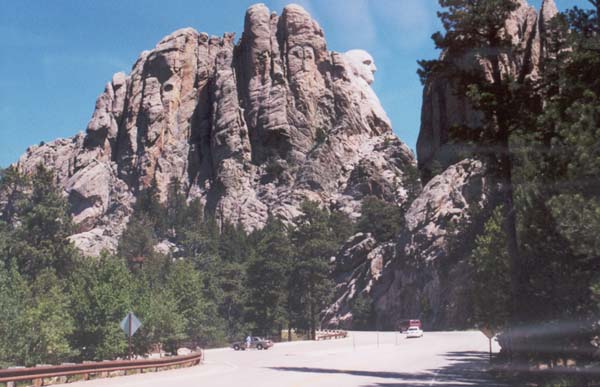
|
A couple of more turns in the road, and we will be at the entrance
to the monument. |
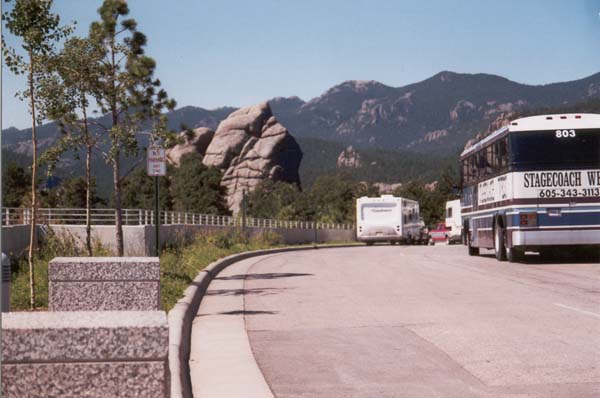
|
We are parked, and walking up the main drive of the Mount Rushmore
monument. The place is packed with tourists. This photo was taken before
all of the concern with terrorists. Currently, vehicles are not allowed to
park on this drive. |
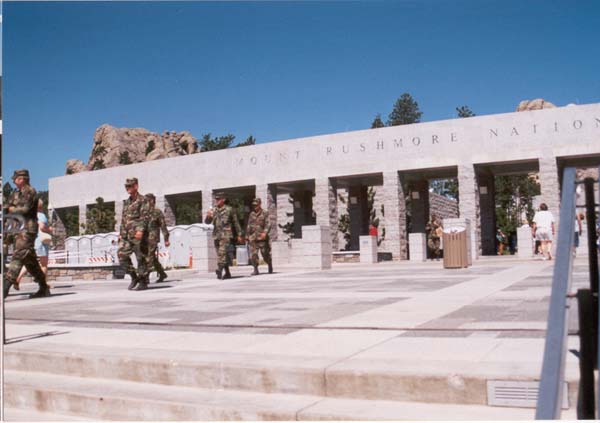
|
The main entrance to the Mount Rushmore monument. As is often the
case, there are a number of visitors from the nearby military bases. |
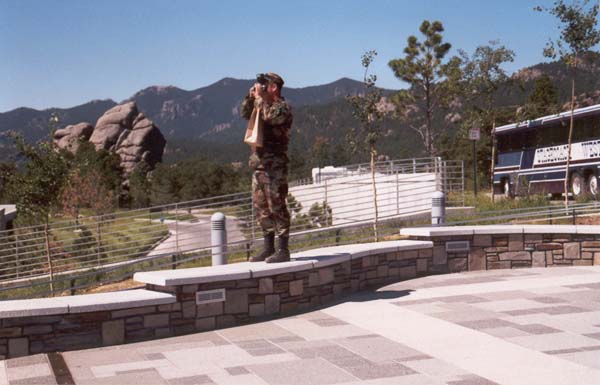
|
A soldier posts himself at a vantage point, and photographs the
area. We are still outside of the visitor center, and looking away from
the monument itself. |
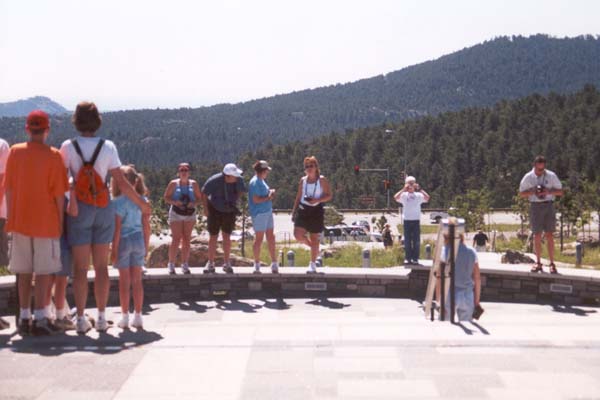
|
Civilians are no more immune to the spectacle of the place than
soldiers. A family photo is taken, with the Black Hills as a backdrop.
This photo was taken with my back to the monument. |
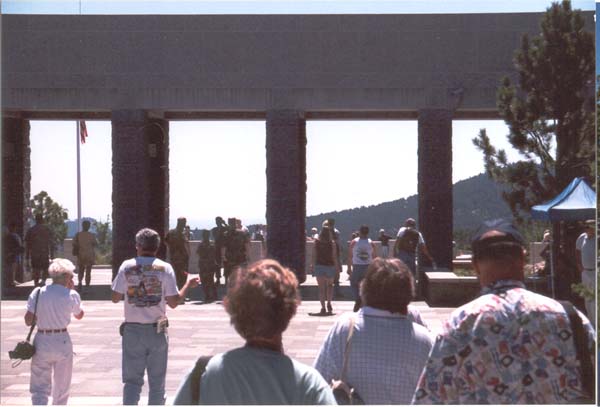
|
Just inside of the entrance way, looking out. we are in a large
plaza. The center is set up with several archways which break it up into
a series of plazas, and malls. All are set on a straight line pointing
to the monument, and are passed through as you make your way to the observation
platform. Off to the sides of the plazas, are shops, restaurants, administrative
centers, information centers, and exhibits. |

|
The monument itself looms over the visitor center. Suddenly the
large granite archways which had struck me as bering so massive, seem insignificant.
The sculptures are much larger and farther away than this photo makes it
appear. |
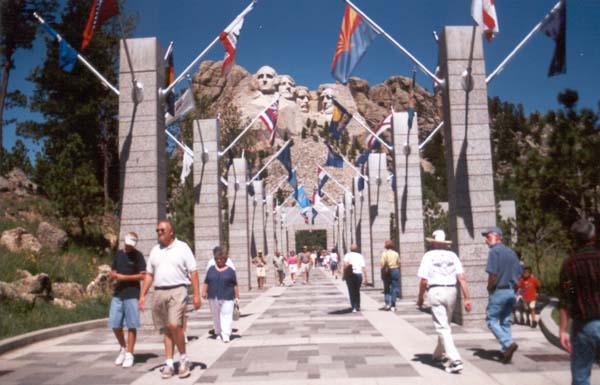
|
The avenue of flags leads from the Concession Building to the Grandview
Terrace. |

|
The viewing platform itself is one of the few places which has scarcely
changed at all. it has been repaved, but the structure and layout are the
same. |
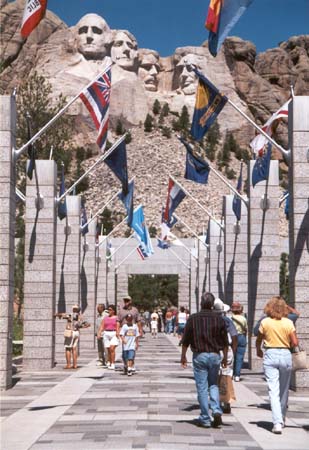 The Presidents look out across the avenue of flags, or so it seems. This
is the last area of the visitors center, before we enter the viewing platform
itself. The sculptures themselves, as any of the assorted tourist, travel,
or government information services will tell you, were created by Gutzon
Borglum, beginning in 1927. Work continued until 1941. Borglum is defined
by this great work, though in truth he was a very talented conventional
sculptor. As much as the Rushmore monument may have immortalized him, it
might actually have hurt his deserved good reputation as a serious sculptor.
The Presidents look out across the avenue of flags, or so it seems. This
is the last area of the visitors center, before we enter the viewing platform
itself. The sculptures themselves, as any of the assorted tourist, travel,
or government information services will tell you, were created by Gutzon
Borglum, beginning in 1927. Work continued until 1941. Borglum is defined
by this great work, though in truth he was a very talented conventional
sculptor. As much as the Rushmore monument may have immortalized him, it
might actually have hurt his deserved good reputation as a serious sculptor.
The sixty foot high busts of Washington,
Jefferson, Roosevelt, and Lincoln were blasted 500 feet up the side of the
mountain. Mount Rushmore itself stands 5725 feet above sea level.
It has been estimated that they would stand 465 feet tall, if they were
full body sculptures. Actually, Borglum had initially planed to complete
the works down to waist level, but imperfections in the rock, problems with
funding, and several reorganizations of the monument administration lengthened
the time of completion, and frustrated these efforts. The sculptures were
finished by his son Lincoln on October 31st 1941. Borglum himself had died
March 6th of that year, just short of the project's completion.
The sculptures cost somewhere between $900,000
and 1 million dollars to build and required the efforts of The Keystone
Boys, approximately 400 local laborers. Interestingly, the ten year redevelopment
of the tourist center, which was completed in 1998, cost 56 million dollars. |
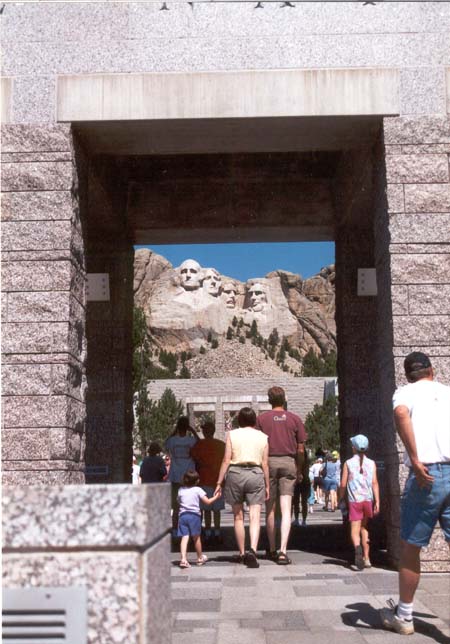
|
A bit further back, and we can see the sculptures nicely framed
by one of the first archways. |
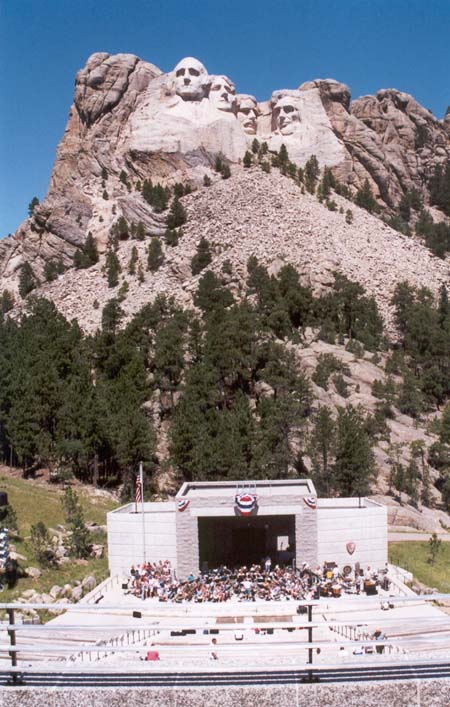
|
The observation platform overlooks an amphitheater near the foot
of the mountain. There are regular concerts, and shows put on here. There
is a nightly ceremony, every week night at 9:00, in which the sculpture
is lit up, and there are often fireworks displays, and nightly events. |
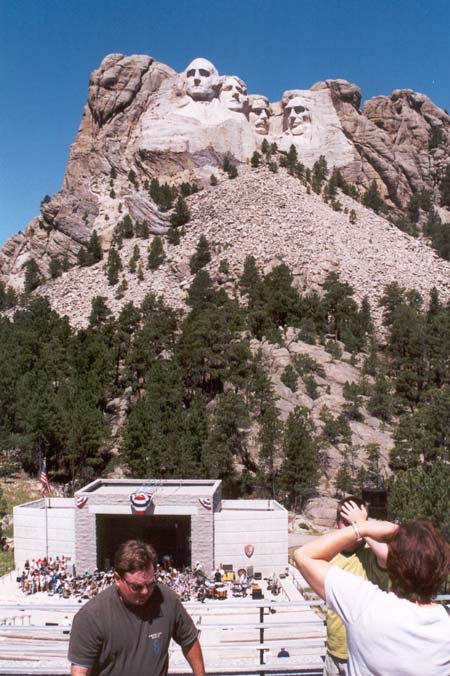
|
A few tourists stand at the edge, looking out to the monument, and
down at the practicing orchestra. |
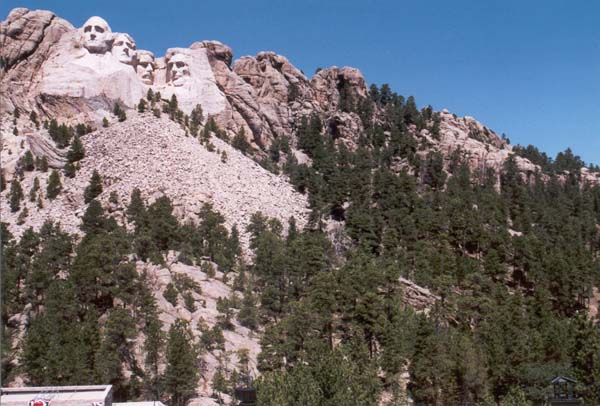
|
The mountain, seen as a mountain. The standard picture postcard
view does not do this place justice, and makes it appear as if the sculptures
are closer, lower, and smaller than they actually are. It also makes them
seem displaced, and apart from their surroundings. |
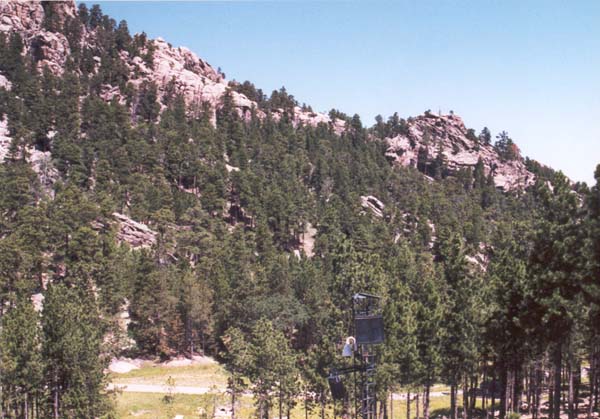
|
A bit further down, showing more of Mount Rushmore. This is actually
a pretty significant mountain. It is one of the Black Hills, but calling
these large features hills is a bit too diminutive. They are all, in truth,
mountains. The confusion occurs because they rise out of nowhere, and connect
to no range, or system, in contrast to most mountains. |
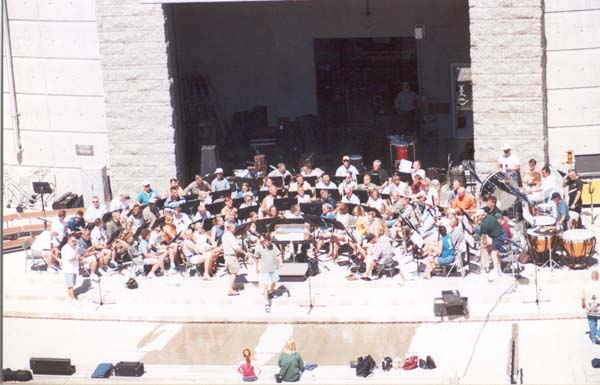
|
A practice session. This is a high school band, though college,
military, and professional orchestras often play here. There are day concerts,
but in this case, they are preparing for the night's upcoming performance. |
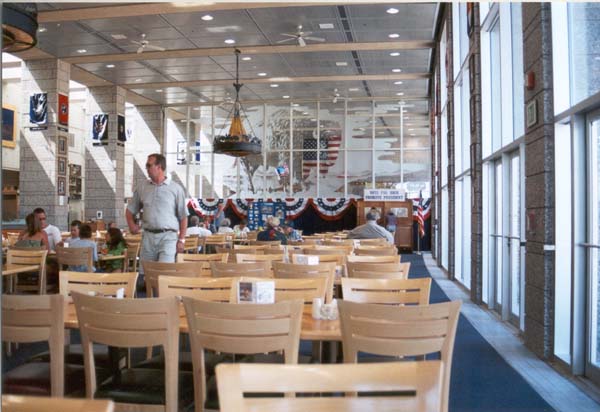
|
Lets eat! A wall of windows looks straight out at the sculptures,
from the inside of the dining hall. Signs along the way invite us to have
a "Monumental Breakfast" or a "Monumental Lunch". We took them up on the
offer, and found the food to be quite good, and not too expensive. Though
significantly remodeled, this is the dining area in which Carry Grant was
shot in the movie North by Northwest. |
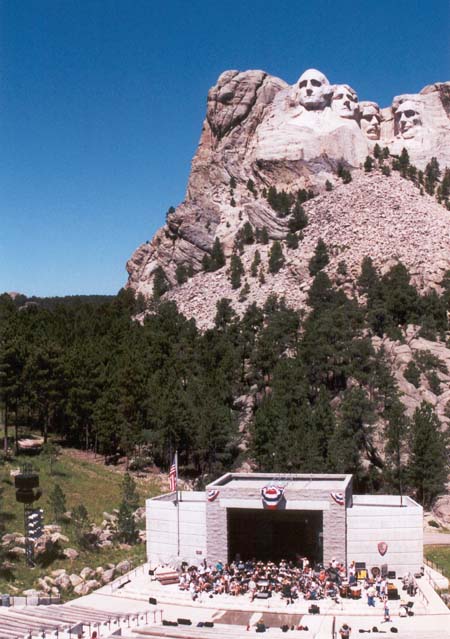
|
Elevators lead down to the amphitheater level. There are also trails,
a sculptors studio, and an exhibit/demosntration hall. Rangers give tours
of the studio, and lead hikes along the various trails. There are interpretive
programs, exhibits and a film at the Lincoln Borglum Museum. A number of
other activities are conducted, keeping the monument a busy and crowded
place. |









 The Presidents look out across the avenue of flags, or so it seems. This
is the last area of the visitors center, before we enter the viewing platform
itself. The sculptures themselves, as any of the assorted tourist, travel,
or government information services will tell you, were created by Gutzon
Borglum, beginning in 1927. Work continued until 1941. Borglum is defined
by this great work, though in truth he was a very talented conventional
sculptor. As much as the Rushmore monument may have immortalized him, it
might actually have hurt his deserved good reputation as a serious sculptor.
The Presidents look out across the avenue of flags, or so it seems. This
is the last area of the visitors center, before we enter the viewing platform
itself. The sculptures themselves, as any of the assorted tourist, travel,
or government information services will tell you, were created by Gutzon
Borglum, beginning in 1927. Work continued until 1941. Borglum is defined
by this great work, though in truth he was a very talented conventional
sculptor. As much as the Rushmore monument may have immortalized him, it
might actually have hurt his deserved good reputation as a serious sculptor.







